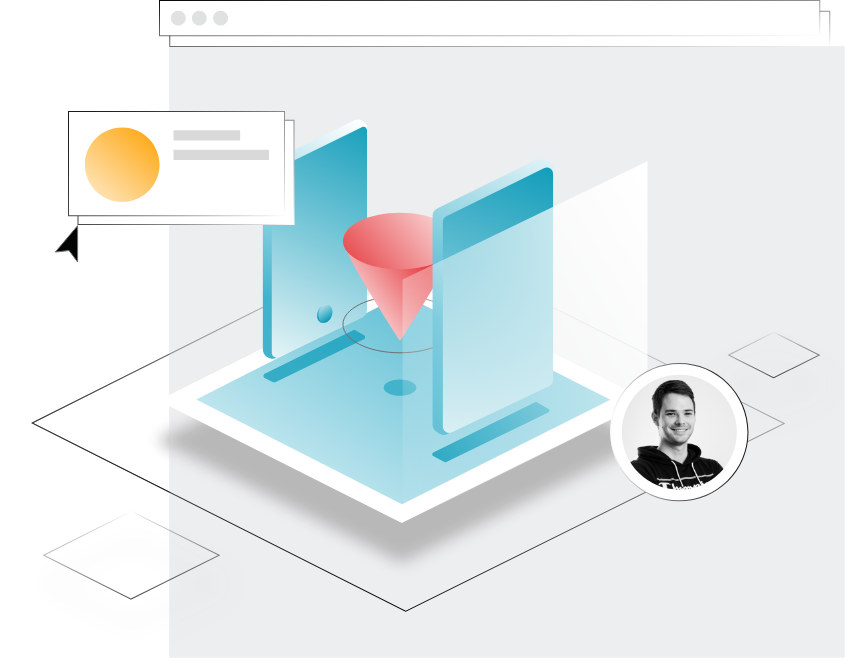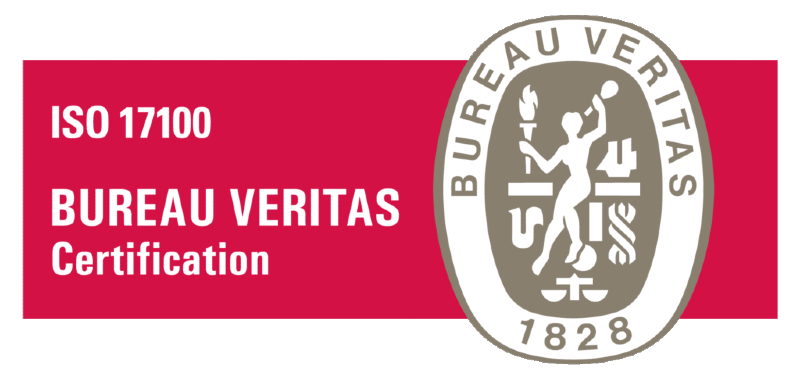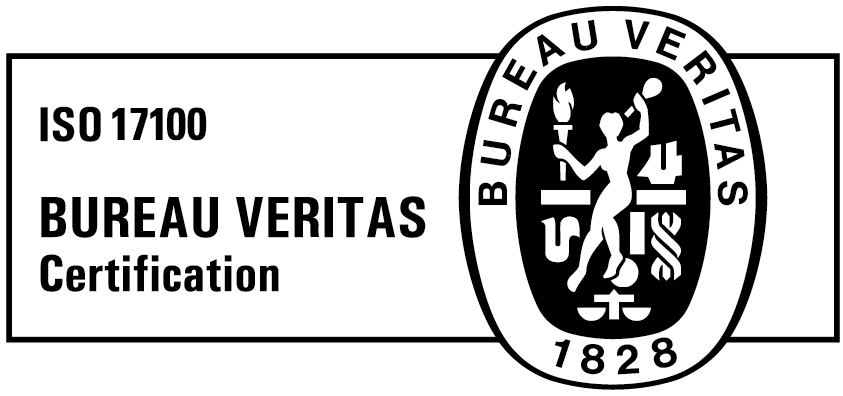From UI to help docs - software localization that scales
Expand your reach – localize your software, app, or platform into multiple languages with fast & reliable software translation services.


Tailored
solutions
Reach users worldwide with tailored software localization services.

More than
100 languages
We localize software in more
than 100 world languages.

Complete
service
Complete service from start to finish,
for growth-minded companies.

Guaranteed
safety
All your data and the information
in your translations are in safe hands.
Software Localization Pays Off – Up to 2,400% ROI
Localizing your software is about making your product feel like it was built for each user – no matter their language, location, or culture.
That’s where software translation services come in. They adapt everything – text, UI, visuals, formats, and functionality – so your software thrives globally.

When should you invest in software translation and localization?
Expanding into new markets – More users, more revenue, more impact.
Improving user engagement & retention – When users interact in their native language, they stay longer and convert better.
Ensuring compliance with regional regulations – Avoid legal pitfalls and ensure smooth adoption in international markets.
Optimizing UX for different cultures – Because a one-size-fits-all approach never works in software.
Did you know? Studies show that for every dollar invested in software translation services, businesses can expect a ROI of $25. Software localization pays off even if you have a limited budget.
Our Comprehensive Approach to Software Localization
When choosing a software translation partner, you need more than word-for-word accuracy – you need a team that understands your product, your users, and your growth strategy. That’s where Taia comes in.
Our AI-powered translation software tool, combined with human expertise and a step-by-step approach, helps you scale faster, connect with users in their own language, and make your software feel right at home – wherever home is.
Step 1: In-Depth Analysis & Strategy
Before we touch a single word, we dig into your software’s structure, UI, and functionality to craft a localization plan that works with your tech, not against it.
Example: For a project management SaaS, we first analyze how task names, deadlines, and notifications behave in different languages. We make sure that things like date formats, text expansion, and right-to-left (RTL) support don’t break the UI.


Step 2: Terminology Standardization
Mismatched translations can ruin user experience. We create a glossary of industry-specific terms, so key phrases stay consistent, accurate, and on-brand in every language.
Example: In medical software, we ensure terms like “treatment plan” or “dosage” are always precise – because mistakes aren’t an option.
Step 3: Localization & Technical Adaptation
This is where the magic happens. Our expert translators and tech specialists work together to translate, adapt, and integrate content seamlessly, keeping the UX smooth and intuitive.
Example: Got a gaming app? We’ll tweak character names, cultural references, and humor so they hit just right in every language.


Step 4: Testing & UX Checks
A bad translation isn’t just awkward – it can break your UI. We test every screen, button, and menu to make sure everything fits, reads naturally, and works flawlessly.
Example: If a translated button in your mobile app suddenly overflows or misaligns, we fix it before it ever reaches your users.
Step 5: Implementation & Continuous Localization
Software is always evolving – so your translations should, too. Our software translation services include an ongoing support to keep every new feature, fix, and update perfectly localized. Think of it like CI/CD but for translation.
Example: Launching a new SaaS feature? We’ll ensure your global users get an instant, seamless experience in their language from day one.

Success Story: Taia Made Localization Possible for LightBurn

Industry-Specific Software Translation Services
Wherever your software fits, we make sure it speaks the language of success.

Gaming & Apps
Immersive storytelling, interactive UI, and region-specific content adaptations to maximize player engagement.
Enterprise & SaaS Platforms
Consistent terminology, secure API integrations, and real-time multilingual support for global business software.
E-Learning & Educational Tech
Localized learning materials, cultural adaptations, and voiceover translations to ensure seamless education across regions.
Finance & Legal Software
Accurate, compliant translations of sensitive financial documents, user agreements, and transactional systems.
Taia is ISO 17100:2015 Certified
We are very proud of our ISO 17100: 2015 ISO Standardized Translation Certification, which we obtained in 2020.
ISO 17100 defines the roles of the translator, their technical resources and the quality of service. It also outlines the best practices for translation companies in order for them to ensure communication between clients and the translator for all completed tasks.

Certification Requirements
Translator Competency
All Taia translators demonstrate the five specific competences outlined by the ISO: translation competence, linguistic and textual competence in source and target languages, competence in research and processing, cultural competences, technical competences, and domain competence.
Translator Qualifications
All Taia translators have a certificate of competence and five years of documented professional experience. Similarly, all translators and revisers have sufficient knowledge in the field of the texts they translate.
Minimum Standards
All translations are subject to revision by a reviser.
Communication between the client and Taia
We put emphasis on effective communication with you to ensure that the translation meets quality standards. This means that we work with you to understand the relevant requirements, including the quality of the target text, and it’s characteristics. We come to an agreement with you on the style of the translation that is required before the translation begins.
Feedback Process
Taia uses a client feedback process to better understand how satisfied you were with the work we have done because our goal is to always keep improving!
Data Protection
Frequently asked questions
What is software translation?
Software translation services involve converting a software product’s text, interface, and content from one language to another. This includes UI elements, menus, error messages, help documentation, and other in-app text to ensure that users in different regions can understand and interact with the software.
How does software translation differ from software localization?
Software translation focuses solely on converting text from one language to another, while software localization adapts the entire product for a specific target market. Localization goes beyond translation by addressing cultural nuances, date/time formats, currency, legal requirements, and user experience to make the software feel native to the target audience.
What are the benefits of translating software into multiple languages?
Using software translation services in multiple languages expands your global reach, improves user experience, increases retention and customer engagement, and enhances revenue potential. Studies show the ROI of software localization is 25 dollars for every dollar spent. Software localization also ensures compliance with regional laws and enhances brand reputation globally.
What is the cost of software translation services?
The cost of software translation services varies based on factors like the number of words, target languages, complexity, file formats, and whether additional services like testing or continuous updates are needed. Taia offers flexible pricing options tailored to your software translation needs. Check pricing here >>
How do you handle updates and iterative changes in software?
We use translation memory (TM) and AI-powered tools to track changes efficiently. This means that previously translated content is stored and reused, reducing costs and turnaround time for updates. Our software translation services can integrate with your development workflow and make sure your ongoing updates are always localized promptly.
Can Taia handle the localization of software into multiple languages simultaneously?
Yes, our software translation services cover over 100 languages, so your product can be ready for global markets without delays. To localize your software into multiple languages simultaneously, simply choose all your desired languages when uploading your documents, and we’ll take care of the rest.
What is the turnaround time for a typical software localization project?
Turnaround time depends on the project’s word count, language pairs, volume, and your desired delivery date. However, Taia leverages AI-powered pre-translation, translation memory, and expert human translators to accelerate the process. For ongoing projects, we offer continuous localization to keep up with frequent updates.
What file formats are supported by software translation services?
Taia supports a wide range of file formats, including JSON, XML, RESX, PO, YAML, XLIFF, and more. Our platform can also integrate with various development environments and version control systems to streamline the localization process.
Which languages should I consider for software translation?
The best languages depend on your target market. Some of the most common languages for software translation include English, Spanish, French, German, Chinese, Japanese, and Arabic. We recommend analyzing your user base and market trends to determine the most strategic languages for your software.
What support does Taia offer post-localization?
Our software translation services provide post-localization support, including linguistic quality assurance (LQA), functional testing, and continuous updates to keep your software relevant. Our team is also available for troubleshooting and ensuring that any additional content or UI changes are smoothly integrated into the localized versions.
Which types of software need to be localized?
Localization should be done for any software meant to be used for speakers of languages other than the software’s original language. Taia provides software translation services for apps, software, firmware, CRM, mng applications, and more. Contact our team to discuss your needs >>
Ready to reach the world? Let’s talk.
